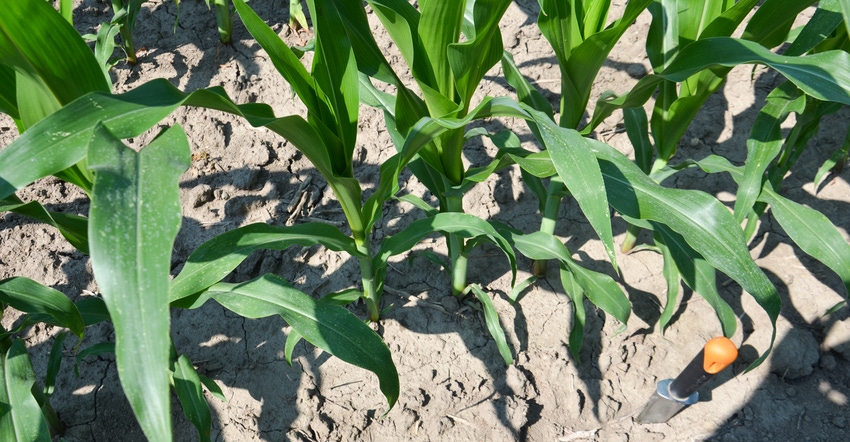
If you’re a betting person, here’s one bet you might shy away from. Dave Nanda bets he’ll find considerable disease pressure in cornfields he walks this year. There are a pair of $64,000 questions, however: How soon will disease lesions show up? Will environmental conditions remain conducive for spreading disease once it gets a foothold?
“I don’t believe it’s a question of if foliar corn diseases are going to appear,” Nanda says. “It’s a matter of how soon, and how prolific will these disease organisms be?”
Nanda is director of genetics for Seed Genetics-Direct, Jeffersonville, Ohio. Seed Genetics-Direct sponsors Corn Watch ’19.
Inoculum present
Nanda likes to say that while there were long delays in planting corn this year, diseases were “already planted.”
“All we’re saying is that many of these disease organisms overwinter in residue,” he says. “The pathogens which cause these diseases are in the soil.
“One thing rain plus flooding and ponding did was help transport these disease organisms to corn leaves. You may not think much about dried mud splashed on corn leaves, but here’s the rub. If the dried soil is on leaves, disease organisms are likely there, too, with the soil. That gives them a head start.”
Nanda found plenty of leaves with mud or soil residue on them when scouting the Corn Watch ’19 field in early July. There was even mud residue on the third and fourth leaves up the plant, he notes. Planted May 28, about four weeks late, the Corn Watch ’19 crop had reached the seven-leaf stage by the Fourth of July.
Fungicide decisions
Watching for disease lesions to appear will be critical throughout the season, Nanda says. Since corn will be developing later than normal, fungicide decisions may be delayed this year, as well.
Those decisions typically boil down to a few factors, starting with how many lesions are on leaves, Nanda says.
“You also need to observe how high up on the plant you’re seeing lesions,” he adds. “The higher on the plant, the more critical it becomes. The ear leaf is critical for grain fill. If lesions are numerous on the ear leaf, you need to be thinking about spraying a fungicide, if you haven’t already. You will be in a better position to watch for that if you scouted early and detected disease once it entered a field. Then you can track its development during the rest of the growing season.”
Besides protecting ear leaves, it’s important to protect upper leaves of the plant, Nanda says. That’s where the bulk of photosynthetic activity occurs later in the season. Without a full “factory,” plants have a harder time capturing enough sunlight to produce enough sugars to make full, plump kernels.
Hybrid susceptibility to various foliar diseases will also affect fungicide decisions, Nanda notes. Check with your seed dealer. There are two hybrids planted in the Corn Watch ’19 field. Susceptibility to various diseases could vary.
The bottom line is to start watching for disease lesions as early as possible, Nanda says. If weather conditions remain favorable, and corn is susceptible, you can expect lesions to be there. There was likely plenty of inoculum in the soil, he concludes.
About the Author(s)
You May Also Like




